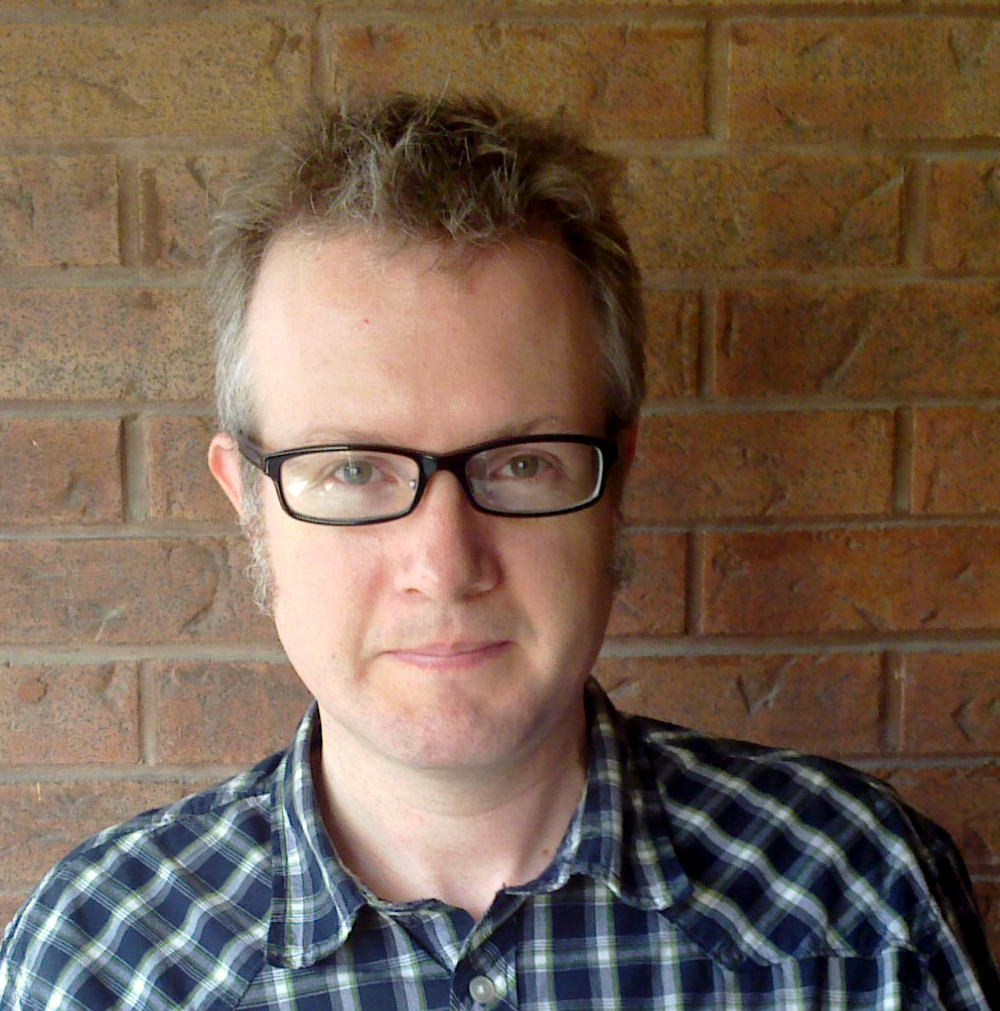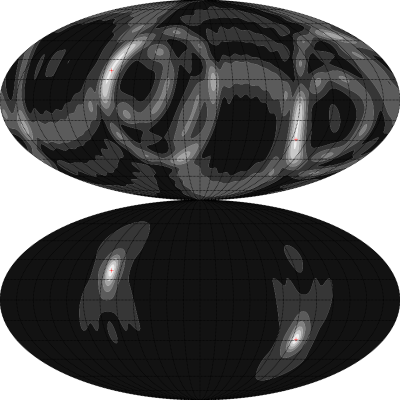
Kipp Cannon
| Canadian Institute for Theoretical Astrophysics 60 St. George St. Toronto, Ontario M5S 3H8 |
Office: (416) 978-1775 Fax: (416) 978-3921 E-mail: kcannonREMOVETHIS@cita.utoronto.ca |

| Canadian Institute for Theoretical Astrophysics 60 St. George St. Toronto, Ontario M5S 3H8 |
Office: (416) 978-1775 Fax: (416) 978-3921 E-mail: kcannonREMOVETHIS@cita.utoronto.ca |
Together with Xavier Siemens I completed a search for cosmic strings in the data from LIGO's 4th science run. See arXiv:0904.4718 or Phys. Rev. D80 062002 for more information.
I am now working with Xavier Siemens and Florent Robinet to complete a new search for cosmic strings in LIGO's 5th and 6th science runs and Virgo's 2nd and 3rd science runs. We have used a noise rejection technique I developed and described in Class. Quantum Grav. 25 105024 to greatly improve the sensitivity of the search pipeline.
Schematically, the pipeline used for the 4th science run analysis looked like this
Data from three detectors were passed through matched-filter template banks of string cusp waveforms, three-way time coincidence was used to identify events aparently seen by all instruments, and an amplitude consistency test was applied to the co-located LIGO Hanford antennas. Only the information from the H1 data stream was used to rank the events according to their significance, information from the other antennas was discarded.
The weaknesses of this system included its requirement that all antennas observe each event, which reduces the total observation time available to the search since the antennas have duty cycles of about 80%. Another weakness was that the significance of the candidate events was assessed using the H1 antenna alone, the other antennas were not considered.
The improved pipeline employs a two-stage system. In the first stage, depicted here
a loose time coincidence test is used to identify [2, ..., n]-way coincidences, and statistics are collected on the distributions of physical parameters of the coincidences; for example, the distribution of the ratio of amplitudes seen in the H1 and L1 antennas, and so on.
In the second stage, depicted here
The probability density data for the event parameters are used to construct a multi-variate likelihood ratio which is then used as the ranking statistic for the search.
The new pipeline allows gravitational waves to be found even when some instruments are not operating, the ranking statistic naturally adapts itself to changes in the behaviour of the antennas without manual tuning cuts, and by folding in more information than just the matched-filter SNR is able to better discriminate signals from noise.
I developed a fast algorithm for omni-directional synthesis imaging suitable for use in low-frequency interferometers such as networks of ground-based gravitational-wave antennas. Details of the algorithm can be found in Phys. Rev. D75 123003. Here's an example picture.

Click here for a movie (23 MB).
Both ellipses are Mollweid projections of the sky in equatorial co-ordinates. In each image, the horizontal axis is the equatorial plane, the vernal equinox is at the centre, the north equatorial pole is at the top, and right ascension increases to the left. Two sources of Gaussian white noise (indicated by the red markers) have been placed, one each, at the locations of the Crab pulsar and the galactic core, and three detectors have been placed, one each, at the locations of the LIGO Hanford and Livingston observatories, and the GEO600 observatory. The time is approximately 0 h GMST, and the top image shows the sky synthesized from an integration of the last 4 minutes of data, and the bottom image from an integration of the last 24 hours.
These approximate images were synthesized at nearly 500 times real-time on a single 1.8 GHz Pentium M processor, and differ from the exact results with a signal-to-noise of about +26 dB.
Traditional approaches to the detection of GW transients take an ``all at once'' approach in which a chunk of data many times longer than the duration of the signal of interest is loaded into computer memory and analyzed. This approach is easy to implement, but becomes impractical when the signals are many minutes or even hours long. When the target signals become long, the data must be analyzed incrementally, and this requires a redesign of the signal processing algorithms.
Together with Chad Hanna and Drew Keppel, I have been leading an effort to develop the next generation of signal processing tools for GW transient searches. We rely heavily on the GStreamer multimedia processing framework.
Here is a GStreamer graph showing an application suitable for identifying the mergers of primordial black holes in the data stream from a single ground-based gravitational-wave antenna. Click on it to see an enormous PDF version.
For more information visit the gstlal project page.
I have put together a Makefile that automates most of the steps involved in processing LaTeX documents. Included, of course, is the ability to run latex the correct number of times, but the algorithm will also run bibtex and makeindex as needed. A very nice feature of this Makefile is the ability to automatically process xfig .fig files for inclusion in your LaTeX documents.
More information can be found here.
Yet another implementation of minesweeper --- everybody's favourite waste of CPU cycles! My implementation's claim to fame is that it includes a game solver so that at each move it can tell you whether or not you need to guess and/or what the mine probabilities are. Or just watch the computer play for you!
A Linux device driver for the Backer video tape backup device.
You are missed, Gene, for your selfless desire to save us from being educated stupid and evil.
Last updated 2019-04-07.